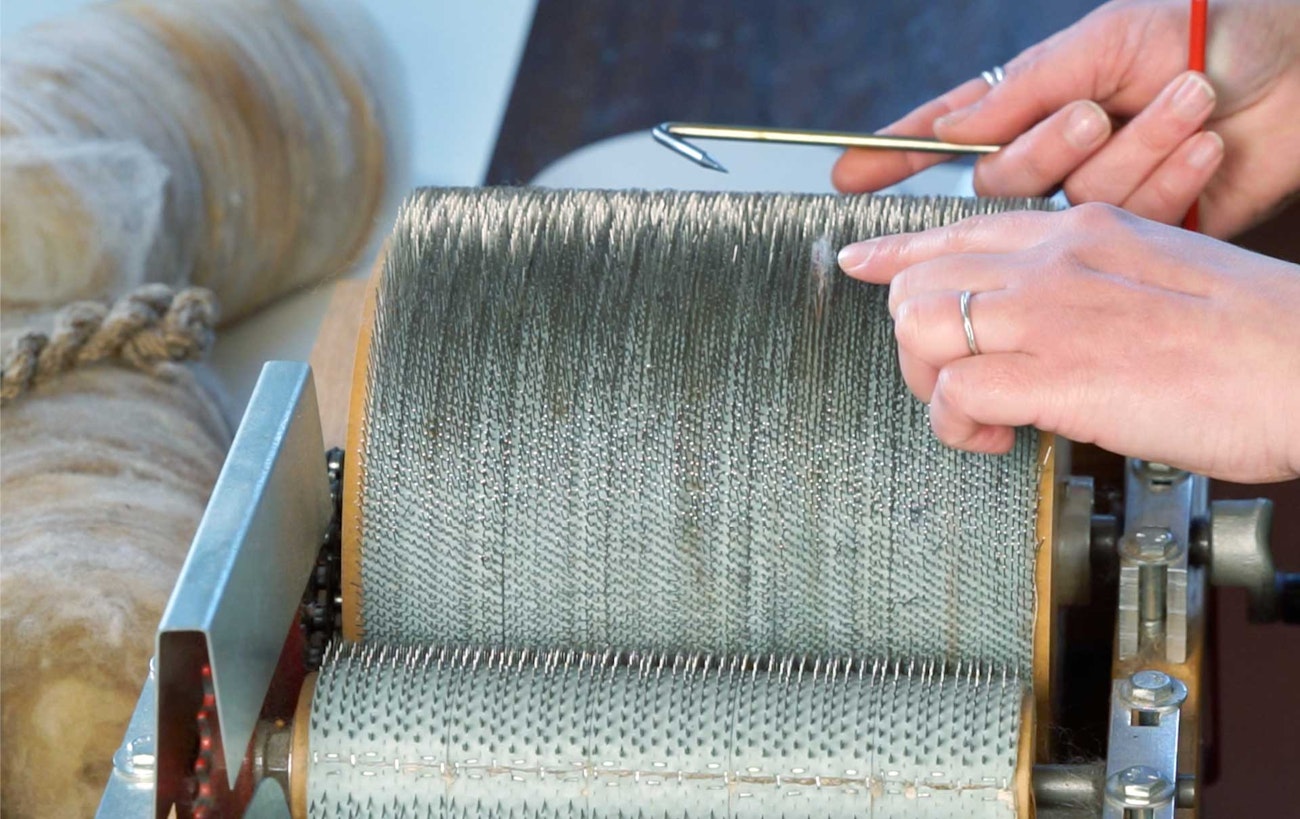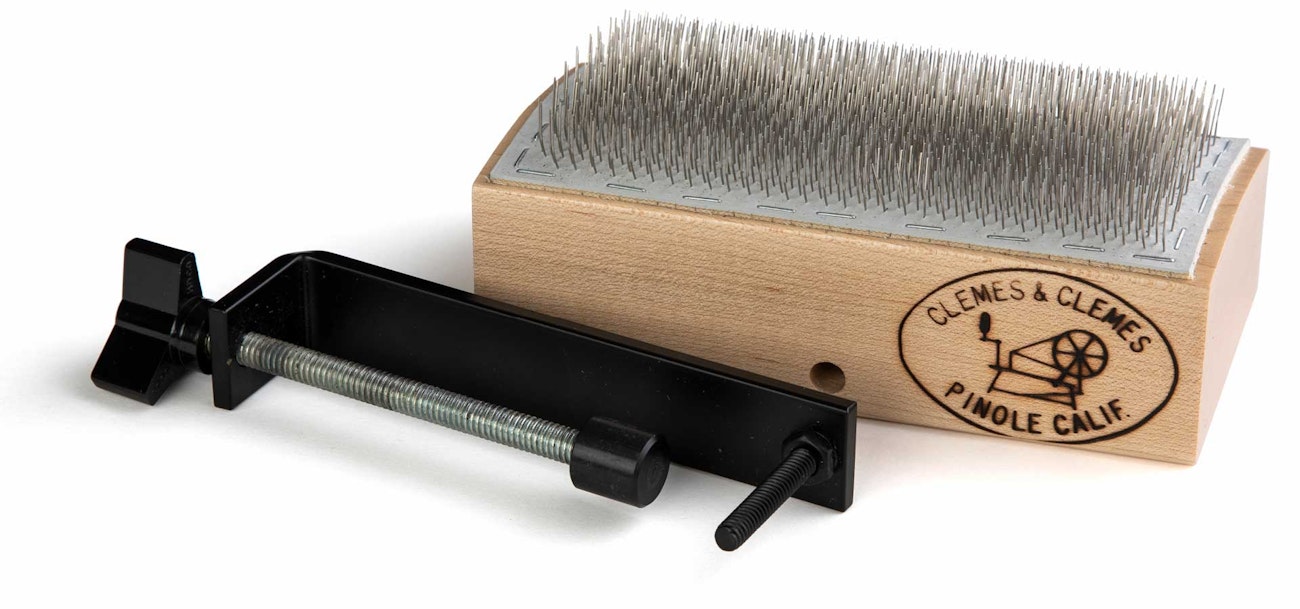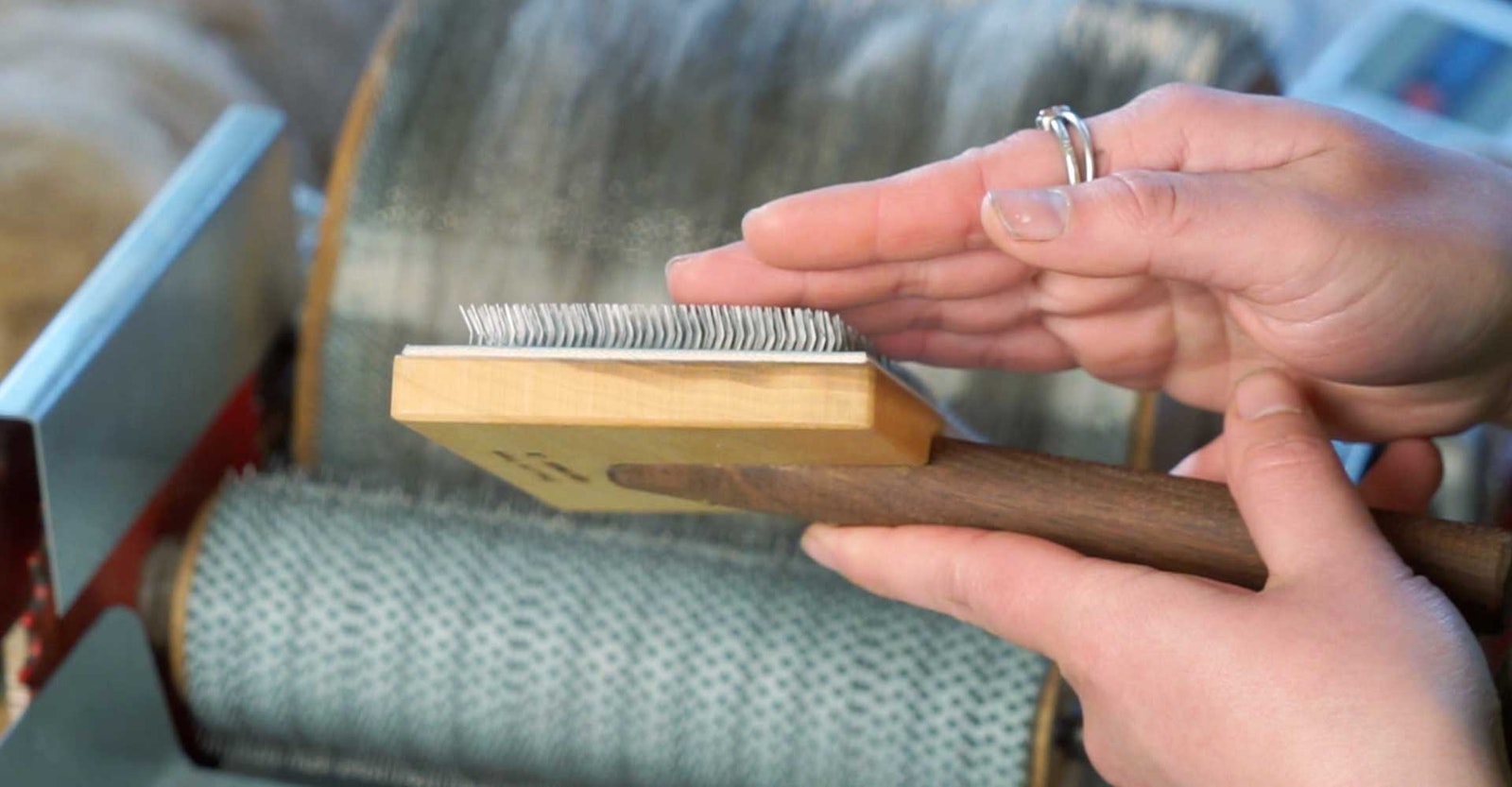Drumcarders can open so many possibilities for making custom batts and fiber blends! In addition to what comes in the box, you can use a range of accessories with your drumcarder. But what are all those tools for? Slight variations, such as the direction of teeth on a brush, can completely change a tool’s purpose, and two tools may perform the same task but appear completely different. Most carding accessories fall into three main categories: prep, packing, and cleaning.
Prep
Tools for fiber preparation are rarely included with a drumcarder as standard accessories because they are such great stand-alone tools. All work to open fibers with a bit of carding cloth on a wood base clamped to your work surface. These tools can take the place of a flicker brush (such as the ones from Fancy Kitty and Strauch). Some makers take this one step further by attaching the cloth to a curved top surface, as Clemes & Clemes did with the Lock Pop. When I have some stubborn fibers or want a very smooth blend, I use these types of tools.

A hook-style batt remover or doffer is easy to use and gentle on the hands.
Packing
A packing brush is a gentle packing tool. It can come attached to the carder or as a separate tool, and it typically has nylon bristles. The placement of an attached packing brush can be a matter of personal preference. If it is placed over the main drum, as on some models by Fancy Kitty, Strauch, or Brother, it doesn’t leave as much of the drum exposed, but it can be flipped up or removed. Packing brushes placed closer to the licker-in (like the Ashford attachment) or even on the back of the carder (like Majacraft’s Fusion Engine or the finishing brush from Classic Carder) leave more of the main drum open for painting fibers and easier batt removal, and they seem easier to adjust and keep in place. Clemes & Clemes offers a handheld packing brush, so you can use it freely and apply pressure by hand instead of adjusting it on the carder.
A burnishing brush has metal teeth that point upward, away from the handle. The teeth tend to be fine and are usually longer and more flexible than those found on a doffing brush or carding cloth. A burnishing brush packs fibers tighter than a packing brush for bigger, fluffier batts. This is my preferred packing method, and I use it frequently between fiber additions. Strauch, Fancy Kitty, and Clemes & Clemes all have great options for these.

Clamp the Clemes & Clemes Lock Pop to the table near the licker-in to open up fleece just before carding. Photo by Matt Graves
Cleaning
While prep and packing tools aren’t essential to drumcarding, cleaning tools most certainly are if you want to properly maintain your carder. The first step in cleaning your drumcarder is to remove the batt you have just carded. At the seam of the main drum, you will separate the fibers a bit at a time with a specialized tool before pulling your batt off the drum. The tool for this job goes by many names and comes in several different forms. Cleaning brushes are also referred to as doffer brushes, so you may hear the terms doffer stick, doffer pin (Louët), doffer hook (Fancy Kitty), and no-bend doffer (Clemes & Clemes). Awl (Ashford), Knuckle-Saving Batt Pick (Strauch), and picker tool (Majacraft) are several other names and styles that serve this purpose. If you try a few of these, you may find that you prefer one over another. (For me, the hook style is the most ergonomic and easy to use.) Classic Carder offers the most unusual drum-cleaning tool: naturally shed porcupine quills, which slip between the teeth without deforming them.
Doffer brushes generally have metal teeth similar to those on carding cloth in length and structure. The teeth point downward toward the handle of the brush and are used to remove any remaining fibers after carding. Depending on the carder, the same brush may be used to clean both the licker-in and the main drum.
Whenever you want to add accessories to your carder, there are à la carte options for obtaining the tools you most covet from a variety of makers.
Emily Wohlscheid is the fiber and jewelry artist behind Bricolage Studios. She works out of a cooperative studio in west Michigan and teaches online and in person around the country. Learn more at bricolagestudios.bigcartel.com.
To see these tools in action, check out Emily’s new online course Drumcarding Basics & Beyond at learn.longthreadmedia.com. This article was published in the Fall 2020 issue of Spin Off.

